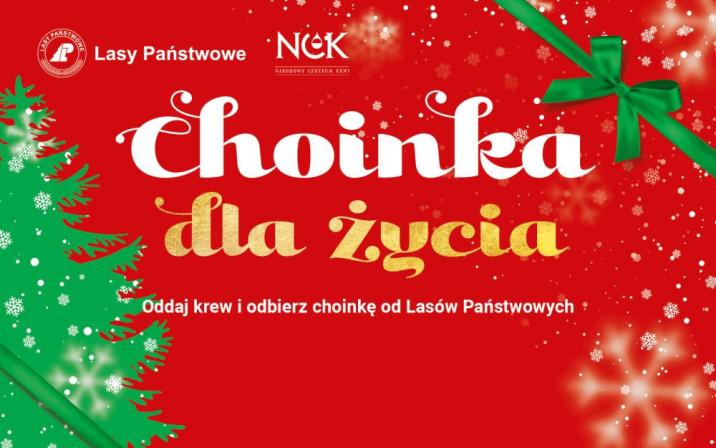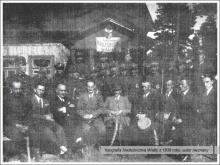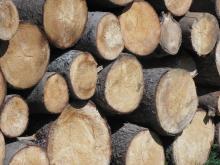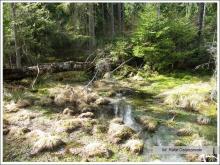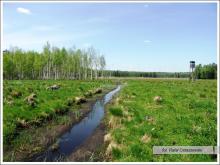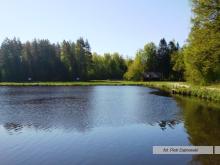 Asset Publisher
Asset Publisher
Polish forests
Poland is in the European lead, while concerning the area of all forests. They cover about 29,2 % of the country territory, and grow within the area of 9,1 million hectares. The overwhelming majority of the forests is state owned, of which almost 7,6 million hectares are managed by the State Forests National Forest Holding..
The number of Polish forest is still growing. The forestation rate of the country has increased from 21 % in 1945 to 29,2 % at the moment. Between 1995 and 2008, the forest area increased by 310 thousand ha. The basis for afforestation works is the "National Programme for Increasing the Forest Cover" (KPZL), assuming an increase of the forestation rate up to 30 % by 2020 and up to 33 % by 2050. Polish forests abound in flora, fauna and fungi. 65 % of the total number of animal species live there.
The forests grow in our country on poor soils, mainly because of the development of the agriculture in previous years. It influences the distribution of the types of the forest sites in Poland. Over 55 % of the forest areas is covered with coniferous forests. In other areas, there are forest sites, mainly the mixed ones. Their small part constitute alder and riparian forests – not more than 3 %.
In the years 1945 – 2011 the area of natural deciduous tree stands within the area of the State Forests National Forest Holding increased from 13 to 28,2 %.
Within the lowlands and uplands the most often occurring tee species is pine. It covers 64,3 % of the forest area of the State Forests National Forest Holding and 57,7 % of private and commune forests. In the mountains the predominant species is European spruce ( in the west) and European spruce with beech (in the east). Domination of pine is the result of carrying on sustainable forest management in the past. Once, the monocultures (crops or cultivations of one species) were the answer to the great demand of industry for wood. Such forests appeared to be quite fragile to climatic factors. They also were often the prey of pests' expansion.
In Polish forests, the share of other tree species, especially deciduous trees have been systematically increasing. The foresters have stepped aside from monocultures – that is why, they try to fit specific species of the forest stand to the natural stand, that would be proper for the given area. Thanks to that, in the years 1945 – 2011, the area of the deciduous tree stands within the lands of the State Forests National Forest Holding increased from 13 to 28,2 %. There occur more and more frequently the following tree species: oaks, ashes, maples, sycamore maples, elms, but also birches, beeches, alders, poplars, hornbeams, aspens, tilias and willows.
Our forests are the most often represented by the forest stands aged 40 to 80 years. The average age of the forest equals 60 years. More and more trees are of big size at the age over 80 years. Since the end of the Second World War, the forests' area has increased up to almost 1,85 million hectares.
Raport o stanie lasów w Polsce 2012
 Asset Publisher
Asset Publisher
Prezent dla tych, którzy podzielą się życiem
Prezent dla tych, którzy podzielą się życiem
Już 16 grudnia każdy, kto zechce przekazać wyjątkowy dar krwi, będzie mógł wziąć udział w akcji „Choinka dla życia”. Dla krwiodawców leśnicy przygotowali świąteczne, naturalne drzewka.
Tuż przed świętami Bożego Narodzenia Lasy Państwowe wspólnie z Narodowym Centrum Krwi promują ideę honorowego krwiodawstwa. Dawcy, którzy 16 grudnia oddadzą krew lub jej składniki - płytki krwi lub osocze, otrzymają naturalne drzewka świąteczne.
- Święta to piękny, rodzinny czas. W wielu domach stanie bożonarodzeniowa choinka. Ważne, by było to naturalne drzewko, pachnące lasem. Proponując takie drzewka, chcemy zachęcić ludzi, by w te święta podarowali wyjątkowy prezent, jakim jest bezcenny dar życia w postaci krwi - powiedział Józef Kubica, p.o. dyrektora generalnego Lasów Państwowych.
Pamiętajmy, że krew jest lekiem, który nie zostanie wyprodukowany w laboratorium. Może go podarować tylko drugi człowiek. Tylko dzięki ofiarności dawców możliwe jest niesienie pomocy pacjentom, którzy w czasie leczenia wymagają użycia krwi lub jej składników. Krew i preparaty krwiopochodne są potrzebne podczas skomplikowanych operacji, ratują życie ofiarom wypadków oraz pacjentom przewlekle chorującym, na przykład na choroby hematologiczne.
Akcja „Choinka dla życia” odbędzie się na terenie całego kraju, we współpracy z Regionalnymi Centrami Krwiodawstwa i Krwiolecznictwa.
W ramach akcji krew można oddać nie tylko w stacjonarnych punktach krwiodawstwa, ale także w specjalnych mobilnych.
W Białymstoku akcja "Choinka dla życia" odbędzie się w Regionalnym Centrum Krwiodawstwa i Krwiolecznictwa w Białymstoku przy ul. M. Skłodowskiej - Curie 23. Wszystkie osoby, które oddadzą w tym dniu krew (lub jej składniki) otrzymają od leśników drzewko świerka pospolitego, przygotowane przez Nadleśnictwo Białowieża.
Na terenie Regionalnej Dyrekcji Lasów Państwowych w Białymstoku akcja "Choinka dla życia" przeprowadzona zostanie również przez Nadleśnictwa: Bielsk, Hajnówka, Łomża i Suwałki.
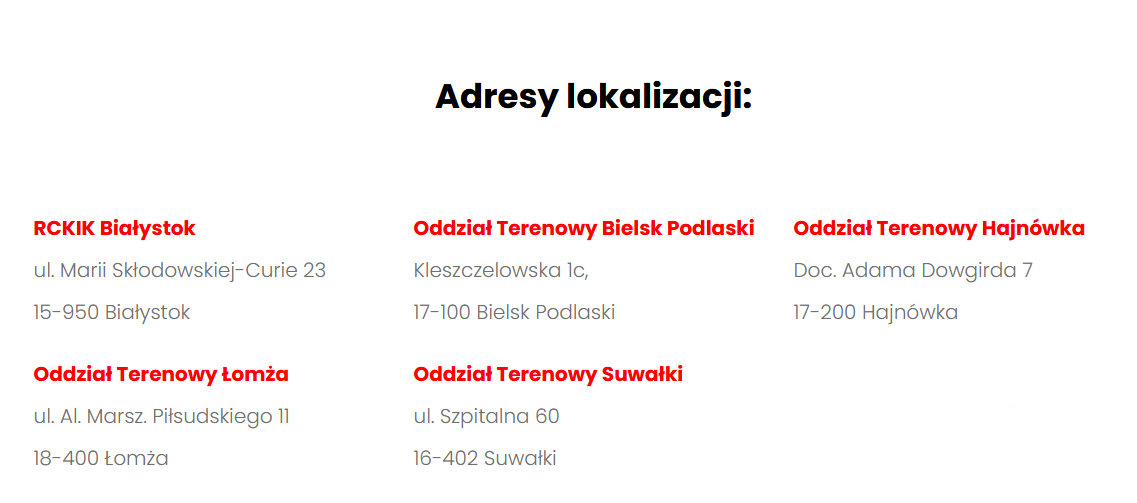
Szczegółowe informacje wraz ze wskazaniem miejsc, gdzie można przyłączyć się akcji są dostępne na stronie www.choinkadlazycia.pl.
Warto pamiętać, by oddać krew należy być osobą zdrową, to znaczy nie mieć objawów przeziębienia, nie przyjmować aktualnie żadnych leków. Przed przyjściem do Centrum Krwiodawstwa i Krwiolecznictwa należy zjeść lekkostrawny posiłek, wypić około 2 litry płynów (w ciągu 24 godzin przed pobraniem) i wziąć ze sobą dokument ze zdjęciem, najlepiej dowód osobisty. Przed oddaniem krwi należy także ograniczyć palenie papierosów i nie pić alkoholu, również w dniu poprzedzającym oddanie krwi.
Krew i jej składniki mogą oddawać osoby pomiędzy 18. a 65. rokiem życia, które ważą co najmniej 50 kilogramów. Szczegółowy wywiad prowadzony przed pobraniem krwi wyklucza osoby, które nie mogą oddawać krwi. Jednorazowo pobiera się 450 ml krwi. Samo pobranie trwa zwykle około 10 minut. Więcej warunków dla dawców krwi znajduje się na stronie www.twojakrew.pl
***
Drzewka z Lasów Państwowych pochodzą z planowanych przez leśników cięć pielęgnacyjnych oraz ze specjalnych plantacji choinkowych. Najczęściej są to miejsca w lesie, które w przyszłości mają mieć zmienione przeznaczenie.
Naturalne choinki po świętach można pozostawić przy śmietniku, skąd zostaną odebrane jako odpady komunalne. Można także oddać drzewko do gminnego punktu zbiórki odpadów jako odpad biodegradowalny. Drzewka muszą być pozbawione wszelkich lampek i ozdób, w tym wykonanych z tworzyw sztucznych, papieru, metalu i szkła.


 fot. Paweł Fabijański
fot. Paweł Fabijański
 fot. Paweł Fabijański
fot. Paweł Fabijański
 fot. Paweł Fabijański
fot. Paweł Fabijański

